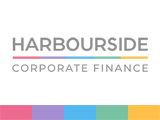In his Budget speech in March, Chancellor Jeremy Hunt kicked off the government’s plan for growth with changes to business tax legislation, a key policy being ‘full expensing’. But what did the Chancellor mean by ‘full expensing’ and how does the policy work? Pearson May partner Matthew Rutter explains.

What is full expensing?
Under full expensing, companies can claim 100% first-year relief on qualifying new main-rate plant and machinery investments. The policy replaces the 130% ‘super-deduction’ introduced in March 2021 and which ended on 31 March this year.
The full expensing scheme will last from 1 April this year until 31 March 2026, although the Chancellor added that he wanted to make it permanent as soon as possible.
How does full expensing work?
Full expensing is only available under very specific circumstances.
First, it is only available to limited companies subject to Corporation Tax. Sole traders and partnerships are excluded, although they are still eligible for the 100% Annual Investment Allowance (AIA) — which is capped at £1m a year.
Second, the plant and machinery must be bought new and unused to qualify for full expensing. It also cannot be a car, given to the company as a gift or purchased to lease to someone else.
Third, expenditure must be within the ‘main rate pool’ of plant and machinery. The types of asset included within the main rate pool are numerous, but some examples of these include (but are not limited to):
- Machines such as computers, printers, lathes and planers
- Office equipment such as desks and chairs
- Commercial vehicles such as vans, lorries and tractors (but not cars)
- Warehousing equipment such as forklift trucks, pallet trucks, shelving and stackers
- Tools such as ladders and drills
- Certain fixtures, such as kitchen and bathroom fittings and fire alarm systems, as long as they are in a non-residential property.
The other most common type of plant and machinery – those items in the ‘special rate pool’ (broadly integral features such as hot and cold water systems, electrical systems and air conditioning systems etc.) – do not qualify for full expensing. But they do for a 50% first-year allowance, subject to the same conditions that apply to full expensing. However, such items should also qualify under the AIA, so it is usually more beneficial to claim that instead.
What happens when a company sells an asset?
For fully expensed assets, the company will have to bring in an immediate balancing charge equal to 100% of the disposal value. This means that if the company sold an asset for £10,000 on which it had claimed full expensing, it would be required to increase its taxable profits by £10,000 in the year of disposal, rather than deducting the proceeds from the capital allowances pool.
What other capital allowances are there?
Businesses can benefit from various other capital allowances, some of which we’ve already touched on. As mentioned above, there is the Annual Investment Allowance (AIA), which, like full expensing, allows businesses to write off the full value of an eligible expense in one go. It applies to both main and special rate equipment and is open to sole traders and partnerships, as well as companies, but is capped at £1m per year. It is however less stringent than full expensing since, for example, it also applies to purchases of second-hand assets.
Therefore, if you have capital purchases below £1m in your accounting period, you may well choose to just claim under the AIA scheme and as mentioned above, you will also benefit more by using the AIA if you are purchasing special-rate or second-hand assets.
There is also the annual writing-down allowance. Businesses usually use this if their expenditure on qualifying plant and machinery exceeds the AIA limit, in order to deduct a percentage of an item from their yearly profits. Under current rates, 18% of the net value of main rate items can be claimed with writing-down allowances each year and it’s 6% for special rate expenditure.
Finally, it is also worth noting that there is a special 100% first-year allowance for very specific items of expenditure which don’t necessarily qualify for full expensing or AIA. You can use this first-year allowance to claim the full cost of eligible assets incurred in your accounting period. The specific types of expenditure include:
- Wholly electric cars and cars with zero CO2 emissions (cars must be acquired new)
- Plant and machinery for gas refuelling stations, such as storage tanks, pumps
- Gas, biogas and hydrogen refuelling equipment.
Expenditure claimed with this first-year allowance does not count towards your AIA, so businesses should make sure to make full use of each scheme available to them.
The above is for general guidance only and no action should be taken without obtaining specific advice.



















